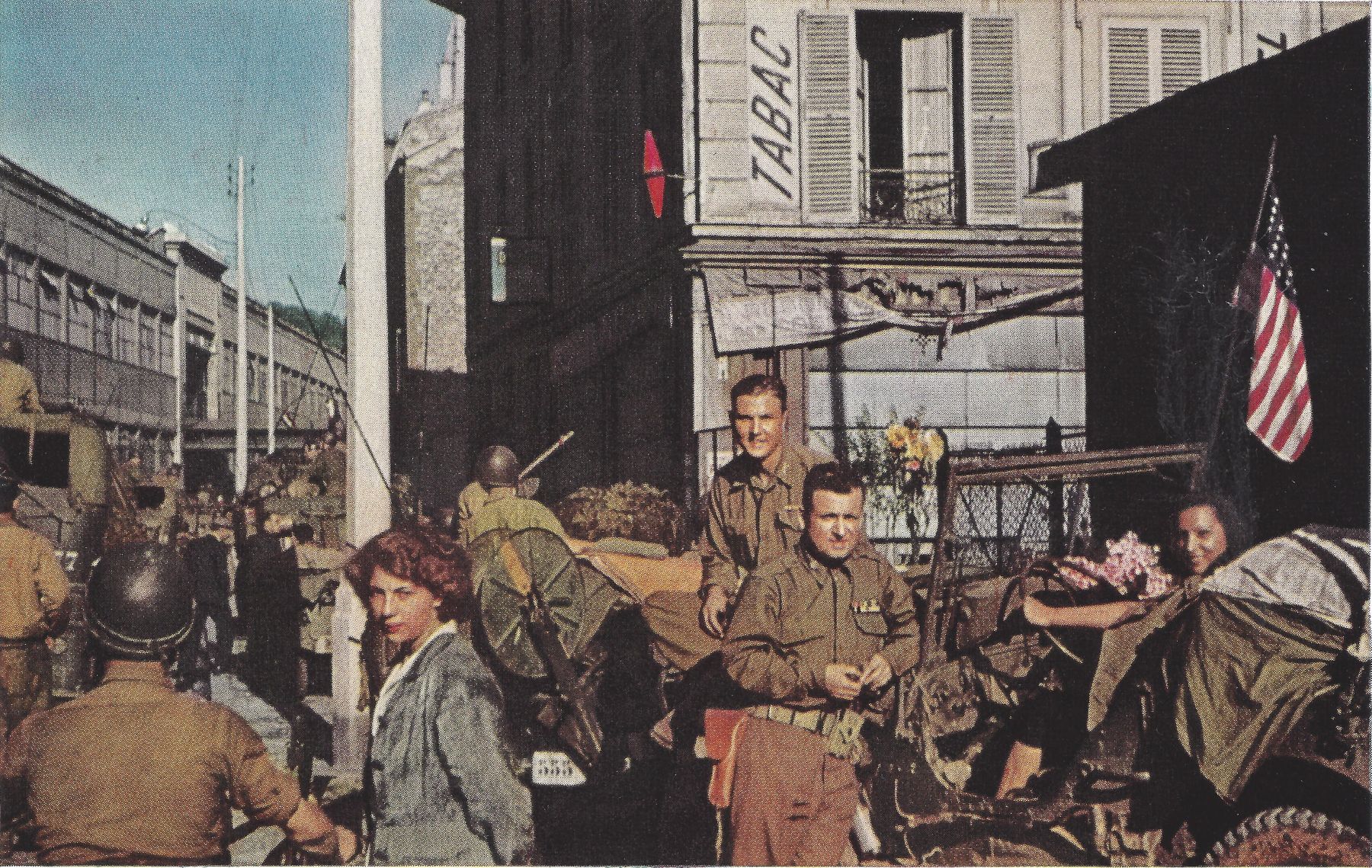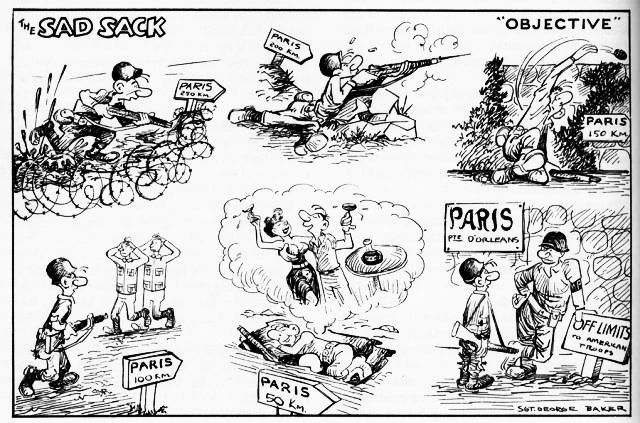Seventy-five years ago, Ernest Hemingway and a historian were among the first Americans to enter Paris as guns were still firing.
-
September/October 2019
Volume64Issue4
With the 75th Anniversary of the liberation of Paris this month, we did a search through the digital archives of American Heritage to see what we had published previously on this momentous event.
And we found a gem: “Papa Hemingway Liberates Paris,” an uproarious World War II narrative that gives a driver’s eye view from a combat jeep as literary legend Ernest Hemingway and a loosely-knit cadre embark on a madcap mission to save the City of Light. This "truth-is-stranger-than-fiction" account is delivered by none other than S.L.A. “Slam” Marshall, one of the great military historians of the 20th Century who wrote our American Heritage History of World War I.
“From first to last it was as fantastic as Uncle Tom done by the late Cecil B. De Mille,” recalled Marshall as if to prepare the reader for the comedy of errors that makes this singular historical drama rival any Hollywood production of the present day. “Our great and gentle friend, Papa, was close beside us, right to the finish.”

Where else can one find a fiery French general like a Cheshire cat “minus the grin” to Hemingway’s request to liberate the Ritz — and its bar — first with “Buzz off, you unspeakables!”?
Or a thirsty Hemingway beseeching the author for some scotch.
“Marshall, for God’s sake, have you got a drink?” Hemingway asked shortly before the clouds lifted and a triumphal entrance into Paris led to a ridiculous bounty of champagne.
“When the jeep at last reached the bank of the Seine it was carrying, like coals to Newcastle, sixty-seven bottles of champagne on a run into Paris. We gave it back to other Frenchmen. As I said, everyone was a little cuckoo,” recounted Marshall. “Papa Hemingway was still with us, and very busy, not instructing the F.F.I. scouts [French resistance], advising [General] Leclerc, or bending the elbow. Like a happy tourist, he was snapping pictures of everyone and anything in sight.”

No spoilers in this short teaser, only that reading Marshall’s "Papa Hemingway Liberates Paris" to the end will reward readers with finding out if Hemingway made it to the Ritz first, and how the figure of Elena, a teenage Spanish girl armed with a carbine and the Americans' guide to the City of Light, was transformed by Hemingway into legend.

